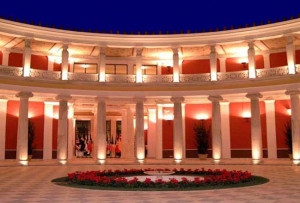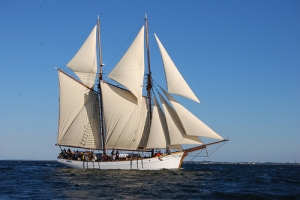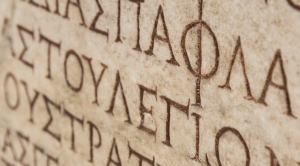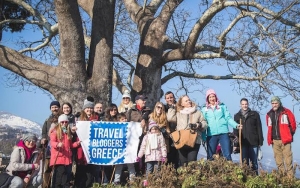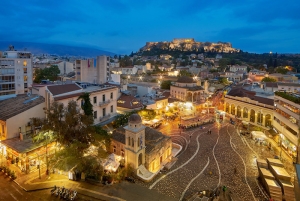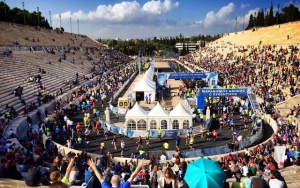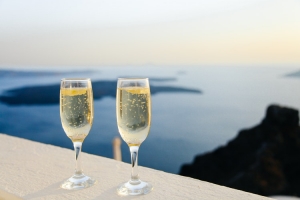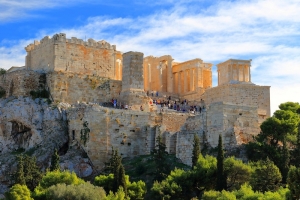XpatAthens
Best Archaeological Museums To Visit In Greece
National Archaeological Museum of Athens - The museum houses some of the best examples of Greek art. Artifacts from prehistoric Greece all the way up to Roman times are exhibited in its halls. Highlights include a large collection of Mycenaean artifacts, archaic Kouros statues, and masterpieces from the Classical and Hellenistic eras. This is by far the largest museum of Greece, and it shelters the best examples of Greek Art and Culture from the entire country.
The building has been recently renovated in 2004, and some of its collections have been enhanced.
The Acropolis Museum (at the Acropolis of Athens)
A visit to the Acropolis should include a visit to the Museum on the site. If you love art, the Acropolis museum will not disappoint with its exhibition of mostly Archaic and Classical sculptures from the various Acropolis monuments. The highlights are the parthenon freeze, a large collection of Kouros and Kore statues, and the original Caryatides statues from the Erectheon. Now if the British government could return the Elgin marbles from London, one would be able to experience the entire Acropolis site in one visit.
Heraklion Museum in Crete
The best examples of Minoan art and culture have been collected in the Heraklion museum in Crete. Minoan civilization has been widely credited as the first European civilization and the artifacts it produced are dazzling in their quality. Highlights of the Heraklion museum include the Bull rython, the gold jewelry from Malia, and the beautiful frescoes from the palace of Knossos. Examples from the classical and Hellenistic periods are also exhibited at the museum.
Olympia Museum
The museum at ancient Olympia is a great place to spend a whole day strolling through its collection. Recently renovated in 2004, it is a pleasant building that shelters some of the best examples of ancient Greek Classical and Late Classical Greek art. Most visitors will marvel at Hermes of Praxiteles, and most art scholars will drool over the statues from the Temple of Zeus pediment and metopes.
Delphi Museum (from ancient-greece.org)
The museum at the ancient archaeological site of Delphi houses artifacts found during excavations at the site and should not be missed if you travel to Greece. Highlights of the museum include the "Charioteer of Delphi", a bronze statue of the severe style, and the two archaic Kouroi named Kleobis and Biton. Since the oracle of Delphi was so important for the politics of the entire Eastern Mediterranean, it was adorned by the best examples of art in ancient times, many of which have been unearthed and are now housed in the museum.
Museum of Prehistoric Art (in Santorini)
I visited the Museum of Prehistoric Art during my visit in Santorini, and I marveled at the variety and quality of its collection. While most travelers think mainly of the Classical and Hellenistic periods of Greek art and culture, there is a whole world of prehistoric art to be discovered in museums like this one. It houses a great deal of artifacts from the excavations at ancient Akrotiri, and its highlights include reconstructions of ancient houses with frescoes of joyous human and animal activity.
Vergina Royal Tomb
The royal tomb of Vergina have been renovated recently to become one of the most spectacular museums / archaeological sites of Greece. The rounded hillock, known as the Great Tumulus was created in ancient Greece to protect the tomb of the Macedonian king Philip II, father of Alexander the Great and others. Today, visitors who enter the tumulus enjoy an excellent exhibit of the artifacts found in the royal tombs alongside the tombs themselves. It is a great example of how the presentation of the artifacts in proximity to their original context allows for a unique experience and the best level of understanding.
Source: Greeklandscapes.com
'One Last Breath' To Represent Greece At 60th Eurovision
Greece’s entry at the upcoming Eurovision song contest in Vienna, Austria, is “One Last Breath,” a ballad performed by Cypriot vocalist Maria-Elena Kyriakou. Kyriakou was one of five performers who competed late Wednesday in Athens in the finals of a local contest to determine Greece's representative at this year's song contest.
Kyriakou will represent Greece at the first Eurovision semifinal on May 19. A second semifinal takes place on May 21, with the final set for May 23.
“One Last Breath” features music by Efthyvoulos Theocharous and Kyriakou and lyrics by Vangelis Constantinidis and Evelina Tziora.
To read more, please visit ekathimerini.com
All Mass Transportation Is Free This Week
Translated by: XpatAthens
Source: In.gr
The Odyssey Meets Greece
Here is what the Project Manager, Matilda von Weissenberg, had to say:
It is time for this project to reach its last tour. It is time to set sails and reach the final destination: Greece, the home of Odysseus himself, the origin of so many myths and legends, philosophers and artists.
When we planned the Meeting the Odyssey project in 2012, we decided that the last tour would happen in Greece as a tribute to all culture, arts, civilization and heritage that we can thank Greece for. Another reason was to show solidarity with the in times of economical crisis. We wanted to go against the trend of blaming the south for the crisis. We wanted to do something that would unite Europeans instead of dividing us. Meeting the Odyssey was our answer to those first signs of EU’s internal crisis that were discernible already back in 2012 – with a ship filled with theatre we wanted to enhance intercultural dialogue and overcome prejudices.
We have sailed many seas and performed in many ports since those planning days. Almost 19000 people have seen the performances in 25 places all over Europe. Meeting the Odyssey started its journey 2014 in St.Petersburg in the middle of very difficult relations because of the Crimean crisis. After a rainy and cold tour on the Baltic Sea, the project reached Central European places like Prague, Opole and Berlin. In 2015 the tour went around Italy, France and Malta, stopping also at Lampedusa, the island where so many migrants have landed after a dangerous trip from the African continent. All along, this project has been somehow present in the places of concern in Europe. The same pattern continues as we reach the final tour in Greece.
The European spectrum has changed during these years. We started out focusing on the collaboration and dialogue within Europe. We end up confronting us with a situation far more complex, where all of Europe is trying to deal with the arrival of thousands of people from outside Europe, people who represent different cultures, religions and languages. How can Meeting the Odyssey face these challenges? How can we, as artists, contribute to a better understanding between cultures and traditions? Can we do anything at all?
We think we can. We have a beautiful sailing ship called Hoppet to take us around in the Adriatic, Ionian and Aegean Seas and we have over 50 artists from all over Europe ready to perform fantastic theatre productions as well as Instant performances and workshops. Here we come Greece!
For more information, please visit: Meeting The Odyssey

